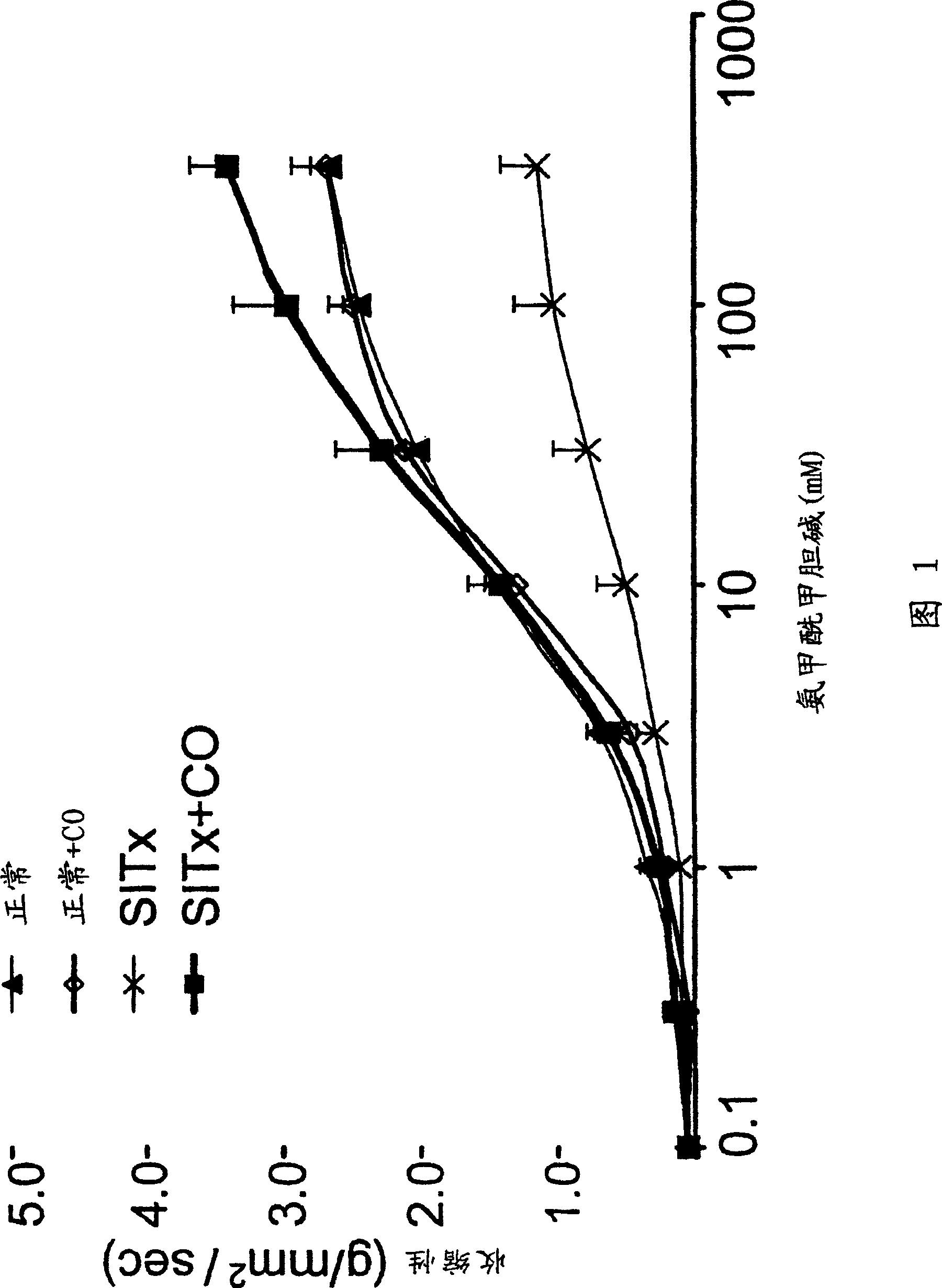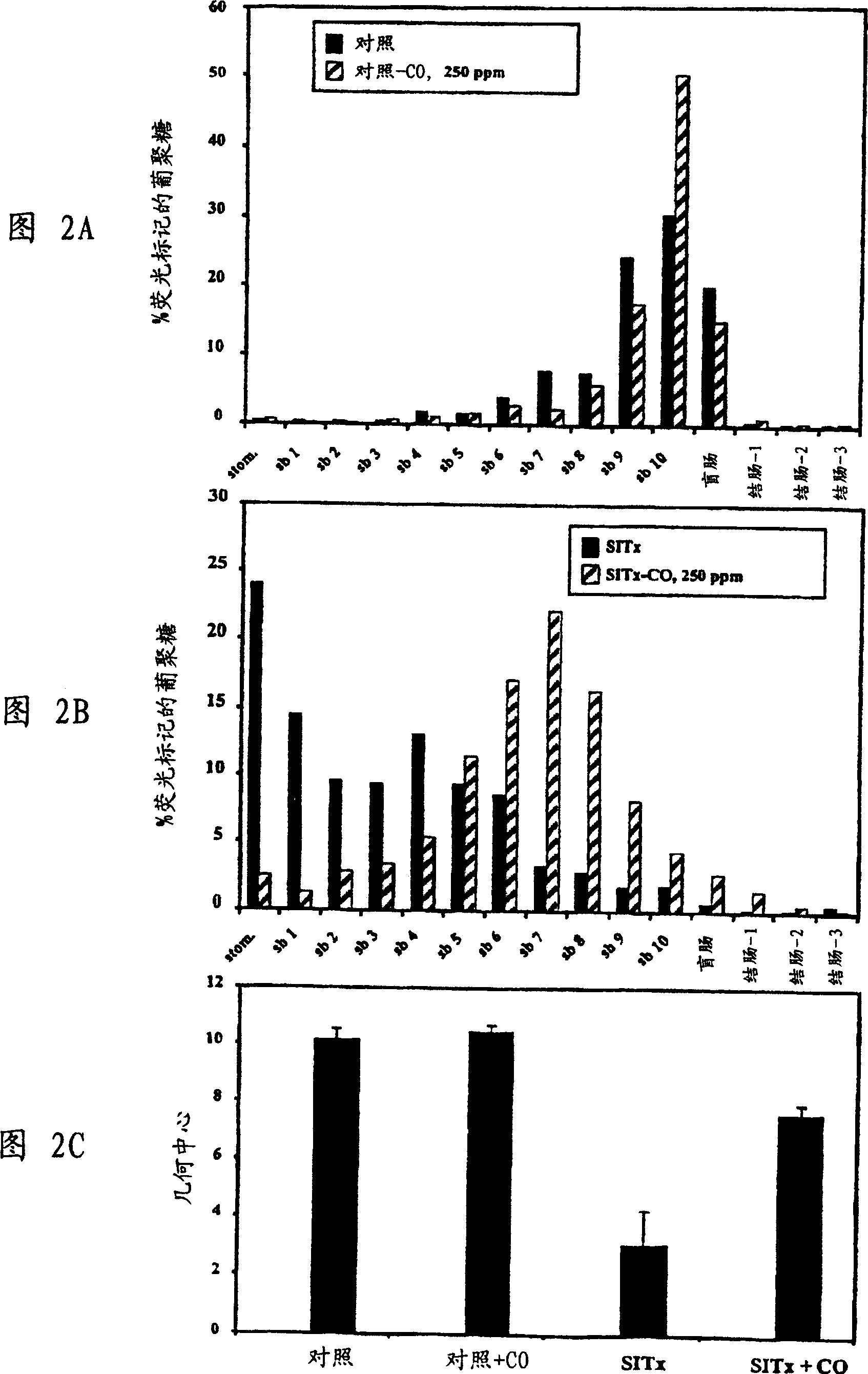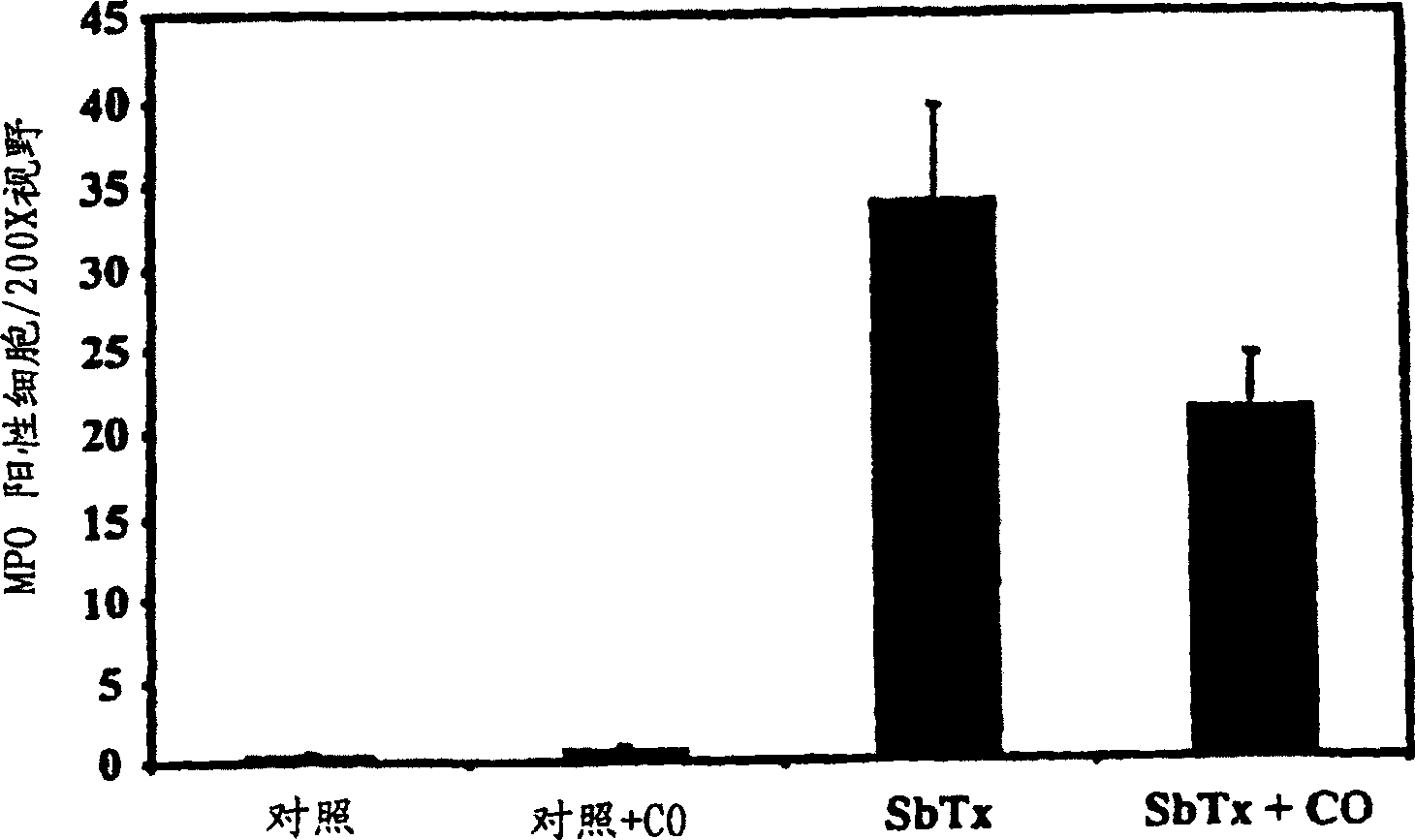Carbon monoxide product and its uses for treating ileus
A technology of carbon monoxide and intestinal obstruction, applied in the direction of digestive system, carbon active ingredients, medical preparations of non-active ingredients, etc., can solve intestinal obstruction and other problems
- Summary
- Abstract
- Description
- Claims
- Application Information
AI Technical Summary
Problems solved by technology
Method used
Image
Examples
Embodiment 1
[0121] Example 1 Protective effect of carbon monoxide on transplantation-induced intestinal obstruction
[0122] animal
[0123] Inbred male LEW (RT1) rats weighing 200-300 g were purchased from Harlan SpragueDawley, Inc. (Indianapolis, IN) and maintained at the Laminar Flow Animal Facility at the University of Pittsburgh. Animals were fed ad libitum with a standard diet.
[0124] small bowel transplant
[0125] To determine whether CO protects against intestinal obstruction associated with small bowel transplantation, orthotopic SITx was performed in syngeneic Lewis rats. SITx with vena cava drainage was performed using the previously described method. The entire donor small intestine was separated from the ligament of Treitz to the ileocecal valve on a vascular pedicle consisting of the portal vein and the superior mesenteric artery with a segment of the aorta. The graft was perfused through the aortic segment with 5 ml of cold Ringer's lactic acid solution and the intesti...
Embodiment 2
[0172] Example 2: CO inhibits the occurrence of ileus associated with surgical manipulation of the small bowel
[0173] animal
[0174] C57B16 wild-type male mice (20-25 g) were obtained from Harlan (Indianapolis, IN). Mice were housed in a pathogen-free facility on a 12-h day / night cycle and fed commercially available rodent chow and tap water ad libitum.
[0175] Experiment grouping and operation steps
[0176] Age-matched mice were divided into four experimental groups: natural ( ) control group (control); control group treated with CO (control+CO); mice undergoing small bowel manipulation (IM); and mice undergoing manipulation and CO treatment (IM+CO).
[0177] Surgical procedures Mice were anesthetized by isoflurane inhalation, and the abdomen was dissected from the abdominal midline. The small intestine is pulled out of the abdominal cavity and lightly compressed along its entire length using a moistened sterile cotton dressing. This procedure is to stimulate the "...
Embodiment 3
[0221] Example 3: CO inhibits the occurrence of intestinal obstruction associated with small bowel operations in mice and pigs
[0222] Intestinal obstruction was induced in mice by gentle manipulation of the small intestine. Incisions are made to expose the abdominal cavity of mice, and small bowel manipulation is performed by gently poking and pricking the small intestine (see, eg, Schwarz et al., Gastroenterology 121(6):1354-1357 (2001)). The incision was then closed and analyzed 24 hours later. Mice were exposed to CO by inhalation (250 ppm and 500 ppm) one hour before enteral manipulation and also during the entire 24-hour recovery period (250 ppm and 500 ppm). Intestinal contractility was measured in vitro by measuring the contraction of the circular muscle band in response to bethanechol (0.3-300 μM), and intestinal transit was measured by the distribution of fluorescein-labeled dextran from oral administration and as described in Example 1 above. Calculate the geomet...
PUM
 Login to View More
Login to View More Abstract
Description
Claims
Application Information
 Login to View More
Login to View More - R&D
- Intellectual Property
- Life Sciences
- Materials
- Tech Scout
- Unparalleled Data Quality
- Higher Quality Content
- 60% Fewer Hallucinations
Browse by: Latest US Patents, China's latest patents, Technical Efficacy Thesaurus, Application Domain, Technology Topic, Popular Technical Reports.
© 2025 PatSnap. All rights reserved.Legal|Privacy policy|Modern Slavery Act Transparency Statement|Sitemap|About US| Contact US: help@patsnap.com



